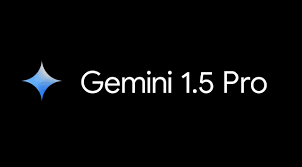In a move that caught industry watchers off guard, Google has officially backtracked on its previously speculated revival of a URL shortener service. Once the leader in link shortening through its now-defunct goo.gl platform, Google’s decision to not re-enter this space signifies a broader shift in its product philosophy—away from utility tools and toward AI-driven solutions and infrastructure.
This development has implications not only for marketers and developers but also for the future of content tracking, analytics, and URL management. In this blog post, we’ll break down what this decision means, why it matters, and how you can best respond as a professional in the digital ecosystem.
A Brief History of Google’s URL Shortener
The Rise and Fall of goo.gl
Google launched its original URL shortener service, goo.gl, in December 2009 to support easier sharing of long links—especially on social media and mobile. The tool quickly became popular due to its clean interface, speed, and robust analytics.
However, in 2018, Google shut down the service, citing a shift in focus toward Firebase Dynamic Links (FDL), a more advanced, app-friendly alternative.
“As we look to the future, we’re refocusing our efforts … and transitioning to Firebase Dynamic Links,” — Google Developers Blog, 2018
What Prompted the Speculation About a Revival?
AI-Enhanced Link Management Rumors
In early 2025, there were industry leaks and UI mockups showing that Google was testing a lightweight URL shortener service integrated with Search Console and Chrome extensions. Some suspected it would be paired with AI tracking to help content creators measure performance across web and social.
Why Professionals Were Eager
- SEO-friendly link masking
- Integrated analytics from Google’s ecosystem
- Spam-resistant infrastructure
- AI-powered context-aware shortening
The market was ready for a modern take on link shortening, especially after Twitter’s rate-limit issues with t.co and Bitly’s rising pricing tiers.
Why Google Reversed Its Course
1. Focus on Core AI and Cloud Infrastructure
Google’s latest earnings call made it clear: AI and cloud products are the new revenue pillars. Re-entering the URL shortener service space would require maintaining compliance, preventing abuse, and moderating misuse—tasks that don’t align with Google’s strategic focus.
“We are consolidating support around scalable platforms like Firebase and Gemini integrations,” – Google Cloud SVP, Q2 2025
2. Redundancy with Firebase and Gemini Ecosystem
Instead of launching a standalone service, Google is doubling down on Firebase Dynamic Links (FDL), which already offers advanced link shortening tied to app and web analytics.
Additionally, Gemini-powered assistants are gaining deeper link sharing capabilities, reducing the need for basic shorteners.
3. Compliance and Moderation Risk
With increasing regulations on URL redirection, especially under the EU Digital Markets Act (DMA), maintaining a URL shortener service poses legal and operational challenges that Google appears unwilling to take on for a free tool.
What This Means for Marketers, Developers & Publishers
The Industry Needs Still Exist
While Google is stepping back, the demand for URL shorteners remains strong. Marketers rely on them for:
- Campaign tracking (UTM tagging)
- Branded URLs
- QR code generation
- Link management at scale
Actionable Alternatives
| Use Case | Alternative Tool | Features |
|---|---|---|
| General shortening | Bitly | Custom domains, analytics |
| Developer-friendly | Rebrandly | API support, branded links |
| Open-source | YOURLS | Self-hosted, privacy control |
| Google Ecosystem | Firebase Dynamic Links | Deep linking, app integration |
✅ Pro Tip: If you’re running paid campaigns, avoid generic shorteners. Opt for branded domains with analytics tracking to maintain trust and click-through rates.
SEO and Analytics Implications
Impact on Link Equity
While shorteners don’t inherently hurt SEO if implemented correctly (with 301 redirects), using trusted services is crucial. Google’s exit means more reliance on third-party tools where link equity and crawlability should be manually tested.
Tracking and Reporting
Professionals should ensure proper UTM parameters and fallback URLs are built into their shortened links to preserve performance data integrity.
✅ Tool Suggestion: Use Campaign URL Builder with Firebase or Bitly integrations for accurate tracking.
Trend Watch: Future of Link Management in the AI Era
The next generation of link management tools is expected to include:
- AI-generated summaries upon link preview
- Sentiment and engagement prediction for each shared link
- Contextual shortening based on audience and platform behavior
These innovations hint at why Google may not need a separate URL shortener service—it’s betting on AI to reshape the very notion of what a “link” means in the information economy.
Final Thoughts: A Missed Opportunity or Strategic Clarity?
Google’s decision to abandon a return to URL shortening may feel like a missed opportunity to some, but it aligns with the company’s broader AI-first and cloud-centric trajectory. For marketers and tech professionals, the message is clear:
Invest in adaptable, analytics-rich, and AI-compatible link management systems—not generic shorteners.
With tools like Bitly, Firebase, and Rebrandly leading the pack, the future of link sharing is about intelligence, not just brevity.
FAQs on Google and URL Shortener Services
Did Google officially confirm a new URL shortener launch?
No. While there were internal tests and rumors, Google clarified in mid-2025 that no public-facing URL shortener service is planned.
What’s the best URL shortener now that Google isn’t offering one?
Bitly, Firebase Dynamic Links, and Rebrandly are top-rated options for professionals.
Is Firebase a direct replacement for goo.gl?
Yes and no. Firebase Dynamic Links offers deep linking and analytics, but it’s more developer-centric than goo.gl’s simple UI.




